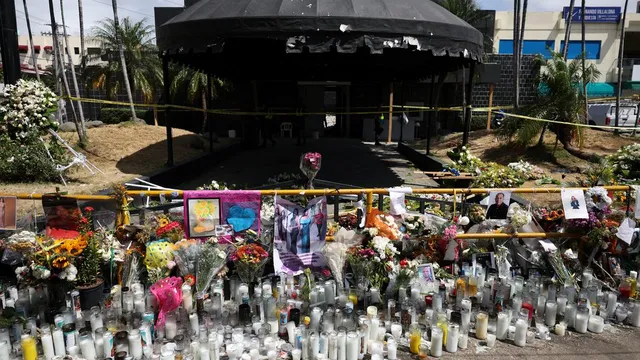
Nightclub roof collapse in Dominican Republic kills 231
2025-04-15 07:17- The roof collapse at Jet Set nightclub occurred on April 8, 2025, in Santo Domingo, resulting in 231 fatalities.
- Families of victims are beginning to file lawsuits against the nightclub's owners amidst ongoing investigations.
- The incident has led to the cancellation of Holy Week festivities and heightened discussions on building safety standards.
Express your sentiment!
Insights
On April 8, 2025, a significant disaster struck the Jet Set nightclub located in Santo Domingo, the capital city of the Dominican Republic, when the roof of the establishment collapsed, leading to widespread chaos and mourning. The collapse resulted in an alarming death toll that has now reached 231, as reported by the Minister of Interior and Police on April 14, 2025. As investigations are underway to determine the cause of the disaster, authorities are focusing on potential vulnerabilities in the building's structure. Many families of victims have begun filing lawsuits against the owners of the nightclub, highlighting the need for accountability in the wake of such an adverse event. In response to the tragedy, local authorities have taken several precautionary measures, impacting the upcoming Holy Week festivities in the Dominican Republic. This year, multiple traditional activities, including beach parties and public celebrations, have been canceled, affecting not only locals but also tourists who typically partake in these events. The Dominican Navy has specifically emphasized the prohibition of such activities to ensure public safety. Antonio Espaillat, the owner of Jet Set nightclub and a prominent broadcaster in the country, expressed his commitment to cooperate with authorities. He stated that from the onset, he has been fully transparent regarding the situation. Nevertheless, the incident has raised serious concerns about structural safety in entertainment venues, spurring officials to investigate further. As forensic examinations are set to commence, authorities estimate that results will not be available for approximately three months. This timeline may seem lengthy, but it is essential for ensuring a thorough investigation into the causes of the roof collapse to prevent similar incidents in the future. The entire event has not only shaken families of victims but has also sent shockwaves across the nation, prompting discussions regarding safety standards in public establishments throughout the Dominican Republic.
Contexts
The history of nightclub safety regulations in the Dominican Republic has evolved significantly over the years in response to various incidents and the growing recognition of the need for a safer nightlife environment. The vibrant nightlife scene in the Dominican Republic, particularly in cities like Santo Domingo and Punta Cana, has attracted both locals and tourists alike. However, this popularity has also resulted in numerous safety challenges, prompting government authorities and private stakeholders to reconsider safety protocols in nightclubs. Initial regulations focused primarily on fire safety and crowd control, necessitated by a series of unfortunate incidents that highlighted the vulnerabilities within entertainment venues. Throughout the late 20th century, the Dominican Republic's regulatory framework began to take a more structured form. Local government bodies began implementing mandatory inspections, requiring nightclubs to comply with safety standards pertaining to fire exits, lighting, and crowd management practices. The tragic events, such as the nightclub fire that occurred in the early 2000s, served as a catalyst for enhancing these regulations. In response, advocacy groups called for a more rigorous enforcement of existing laws, leading to increased inspections and penalties for non-compliance. By the early 2010s, nightclub safety regulations included not just structural safety measures but also considerations for health, security, and accessibility. This period marked the introduction of guidelines relating to the management of security personnel, the use of surveillance systems, and the establishment of protocols for handling overcrowding. The government began promoting training programs for nightclub operators and staff, raising awareness about emergency response procedures and the importance of maintaining order during high-capacity events. Additionally, regulations stipulated that nightclubs should implement strategies to monitor the consumption of alcohol and address issues related to drugs within their premises. In recent years, with the rise of social media and a more informed public, there has been heightened scrutiny on the safety standards of entertainment venues. Stakeholders have begun to actively engage in discussions regarding the continuous improvement of safety regulations, seeking to address the needs of a diverse clientele. The ongoing evolution of nightclub safety regulations in the Dominican Republic reflects a broader commitment to ensuring that nightlife remains safe and enjoyable for all, highlighting the importance of adaptability and responsiveness in regulatory practices to meet the challenges of a dynamic nightlife culture.